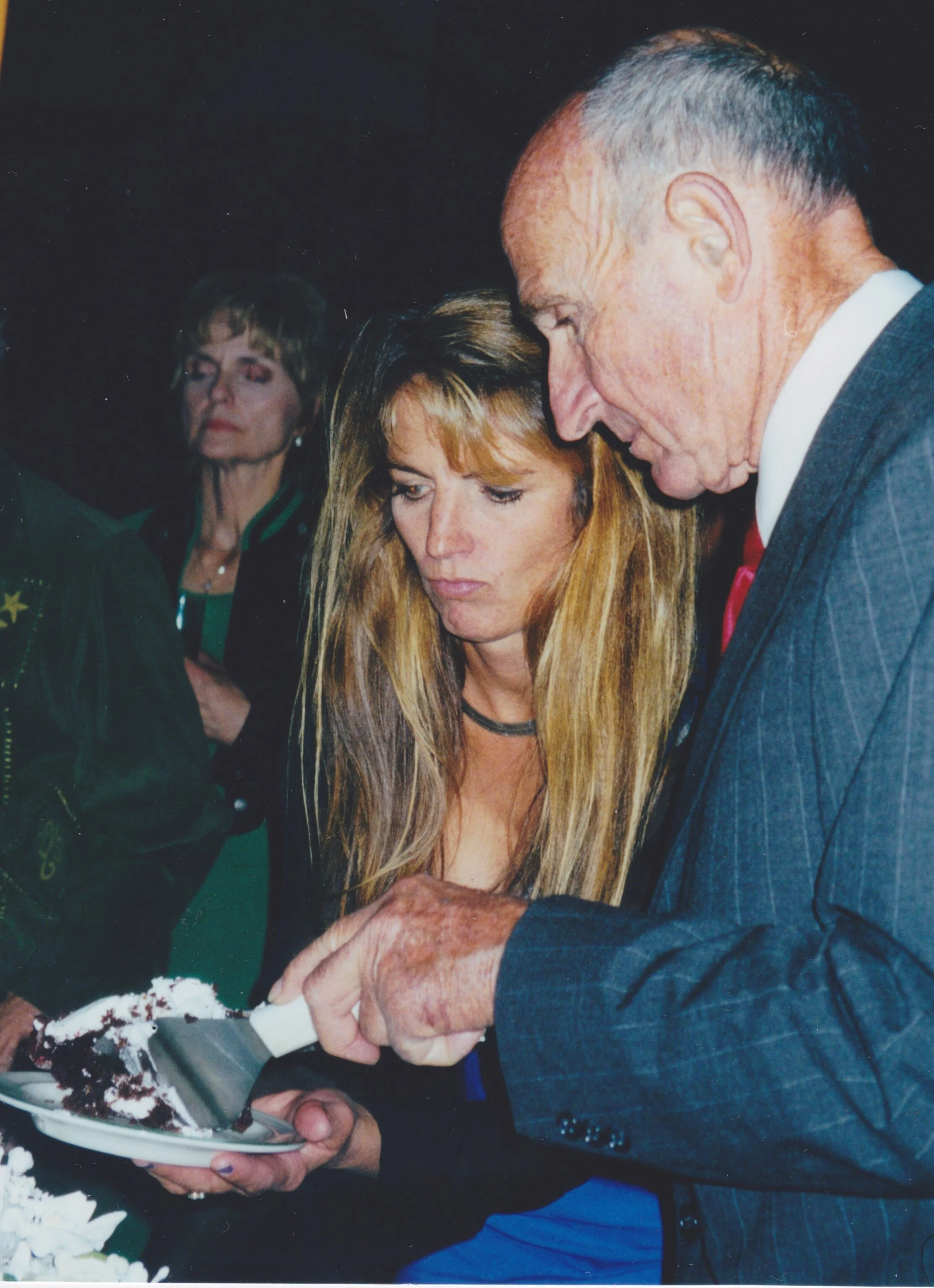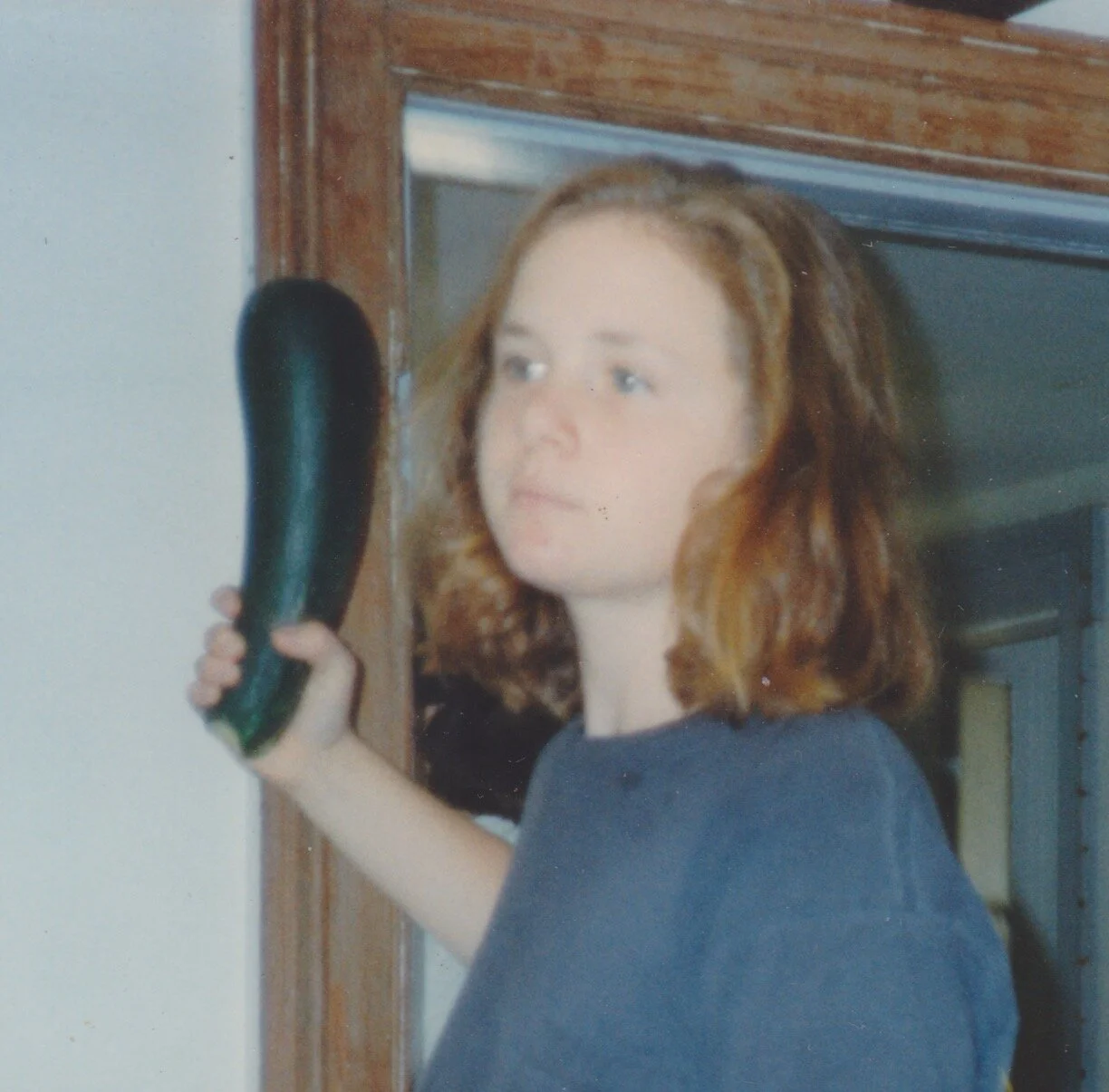Fresh Sliced Tomatoes
Carry, age 5, hung her fresh sliced tomatoes on the branches of a tree.
Carry was a picky eater. She still is. She was a picky eater in a family that ate everything placed on the table. The family motto on the American side was, “Eat up, because you never know where your next meal is coming from.” The family motto on the French side was, “Au travail, on fait ce qu’on peut; a table, on se force.” (At work you do what you can; at the table, you push yourself.”)
For Carry, the spiciest spice she can handle is salt.
Her favorite foods are mac and cheese and Kraft mac and cheese. For her birthday special meal she chose macaroni and cheese.
She’s an anomaly in our family.
A survey of the web with search words “Why are some people picky eaters?” presents a cornucopia of answers.
“Children model the eating habits of their parents and frequent caregivers such as nannies.”
Since it clearly wasn’t the eating habits of the parents (See April Fools Dinner and Pond Scum Salad), it had to be the nanny.
Another theory is that thrill-seekers try new foods – that would be Henry popping a jalapeno into his mouth and chomping it up, and then……his face turning red and he drinking gallons of water and gasping and whimpering. Apparently non-thrill-seekers don’t do this. Neither do smart people and Carry is smart.
The experts have a name for picky-eaters: “food neophobics.” There’s another term for it: gourmet. ““Sometimes people say they’re picky and what they mean is they’re selective or a gourmet so they won’t eat Raisinettes, which have a plastic or waxy chocolate on them, for example. “ says Marcia Pelchat, Ph.D., a researcher at the Monell Chemical Senses Center in Philadelphia who specializes in food preferences in humans. When asked whether or not Carry likes Raisinettes, she replies, “I like Raisinettes, but I like chocolate covered caramels even more.” See? Gourmet; not necessarily neophobiac.
There’s yet another term for picky-eater: ARFID (rhymes with barf-ed, or bar-fed). Stands for Avoid/Restrict Food Intake Disorder. In a family that raffles off the last piece of anything left on the serving platter, does the disorder apply to the guy who passes or the guy who wins?
When asked whether or not she likes cilantro – another classic test for picky-eaters -- Carry says it tastes like dish detergent. Anny was known to have served dish detergent with pancakes when the bottle had “honey” in the label, so we deduce Carry knows what she’s talking about.
Another expert observation: “Picky eaters are very sensitive to things like gelatinousness and cartilage.”
Carry likes Jello. Who likes cartilage?
The mystery as to why Carry is a picky-eater has not yet been solved. The mystery as to why she chose to hang her fresh sliced tomatoes on the branches of a tree has been solved: “Hanging tomatoes on the tree got them out of my sandwich.”
ASPARAGUS
What is there to say about Asparagus? The recipe doesn’t even have a two-word title, like Roasted Asparagus, or Hollandaise Asparagus. This is just Asparagus, because Asparagus was revered in Anny’s eyes the way silverware or a crucifix in other families might be revered.
Our Asparagus came with the farm. Since Asparagus takes years to establish and can be counted on to grow for about 30 years – at which time it becomes so spread out and skinny that it’s not worth harvesting – it could be estimated that our Asparagus patch was planted in about 1930 and had served the Matthews family, self-sufficient dairy farmers for many decades, for many decades. We, the new family to buy the farm, were neither self-sufficient nor dairy farmers, not farmers at all. Anny simply wanted a farm. Period.
She weeded around the skinny stalks in Spring, giving the hoary plants every advantage she could, and she harvested the new growth daily from early May to late June. She cooked the stalks in a tall tin can on her electric stove. She served them with butter and salt. She savored every bite of the delicate taste of Spring.
There were rarely enough stalks to make a vegetable dish. We seven would get the day’s crop in offerings of two or three. Whoever didn’t want to eat Asparagus or whoever didn’t want Asparagus Pee wasn’t forced to eat them because the rest of us gladly took their share.
Anny wasn’t a vegetable gardener, so this was the entire vegetable bounty of the 86-acre farm. From the Matthews’ days, there were left-over current bushes, raspberry bushes, a cherry tree, an apple orchard, quince bushes, black walnut trees, and a big patch of watercress in the stream behind the house. We harvested, cooked, and ate them all. We never “put up” any of the bounty, other than some jars of Quince Jam for a precious friend or two.
This was post-war 50’s and 60’s. Between Victory Gardens and Back-To-The-Earth. When Wonder Bread was thought to contribute to bodies in eight wonderful ways. Before yogurt had invaded America. Anny believed canned goods, frozen vegetables, and instant anything were hallmarks of progress. She was also a self-taught cook, with five kids. Time-saving cake mixes were truly savings.
Anny spent her savings weeding the Asparagus patch.
The Asparagus Recipe
Asparagus needs to be eaten the day of harvest, preferably within an hour of harvest. The fatter the stalk, the better, but more important is the tenderness of the stalk. Even skinny stalks are tender at the tips, so discard any wooden stems and cook what’s left. Steam them in a tall tin can – any tall tin can will suffice -- with the tips upright. Serve with butter and salt. Any leftovers, save for Pond Scum Salad.
Baked Tomato Casserole
This recipe, a family favorite, should probably be included in the Desserts section.
4 cups cubed white bread (crusts are fine)
1 cup (2 sticks) melted butter
2 cups canned tomatoes puréed or chopped
½ cup water
1 cup brown sugar
½ tsp. salt
1 tsp. curry powder
In a casserole, heat the bread cubes in the melted butter for 5 minutes. Add the puree, water, brown sugar, and salt and curry powder. Bake in 350 degree oven for 45 minutes.
Dried Corn Pudding
1 stick butter
1 cup John Cope’s dried corn*
1 15 oz. box corn bread mix
1 cup sour cream
Liquid?
Mix ingredients. Bake 30 minutes in 350 degree oven.
*Dried corn can be substituted with 1 15 oz. can of creamed corn and 1 15 oz. can of regular corn.
Anny’s Zucchini Bread
½ cup vegetable or canola oil
3 eggs
1 cup sugar
2 cups grated zucchini
2 tsp. vanilla
3 cups self-rising flour*
1 Tbsp. cinnamon
½ to 1 cup chopped nuts
Mix together the ingredients, stirring after each addition. Pour into 2 bread pans or 4 mini-pans. Bake at 325 degrees for 1 to 1 ½ hours, until a knife inserted in the middle comes out clean.
Spinach Souffle
Spinach Souffle is like Robert Frost’s poem, The Road Less Travelled. Spinach Souffle is the fork in the road, the choice to go down the unexplored path, because there were two spinach souffles, Anny’s and Aunt Ann’s.
Anny’s was the real thing, homemade, complete with the exuberant delivery of eggs puffed up over the rim of the casserole and then the buddhist acceptance that all things up must come down. Aunt Ann’s was bought from Stouffer’s in a tin foil pan and a shiny box and the emotion wasn’t elation and deflation, it was quiet anticipation in a package of modesty.
Aunt Ann was, diagrammically speaking, not on the family tree at all. She was Garma’s friend from Shipley School, teenagers in a time before there were such things, the word “teenage” originating in the 1930’s when Aunt Anne and Garma were already in their 40’s. Garma already had four kids and Aunt Ann had none, nor a husband. Whether Aunt Ann chose a family to love or whether the family chose her, we’ll never know. She became the mother, grandmother, mentor, godmother, and icon that Garma never could.
Whether her soul mate was killed in the First World War or whether she was the first generation to choose singlehood, we’ll never know that either. We do know Aunt Ann worked all her life, founded Montgomery Country Day School, lived alone, traveled with a friend, voted Democrat, and bought us lots of books about Abraham Lincoln, one for every reading level ending with the abridged Carl Sandberg.
When Anny had a dilemma in raising her family in West Virginia, she called up Aunt Ann in Philadelphia, they both drove to Bedford on the Pennsylvania Turnpike, rented a motel room, talked all night, and the next morning drove back to their respective lives.
When Anny’s sister Lydia made her annual sojourn from the high desert of northern New Mexico to The East, it usually included dropping her three kids off in West Virginia and continuing on to Philadelphia for some culture with Aunt Ann.
When Tina was 12 years old, Aunt Ann climbed the stairs to Tina’s bedroom, sat down at her desk, and handed her a check for $1000, saying, ”Keep this always. A woman needs a nest egg.” And 50 years later, Tina still has that $1000.
When Mary and Jenny, Anny and Lydia’s two daughters, went to Bryn Mawr College, they were three miles from Aunt Ann’s apartment and they had dinner with her once a week. That’s where the spinach soufflé came into the story.
Spinach Souffle from Stouffer’s and fried scrapple, every time. Predictably tasty.
Aunt Ann also provided the college girls her car on loan, tickets to the Philadelphia Orchestra, and a job. Jenny was hired to check on Aunt Ann every other day. The job didn’t last long. One morning Jenny let herself into the apartment and found Aunt Ann dead in her bed.
The road less taken, Stouffer’s spinach soufflé.


